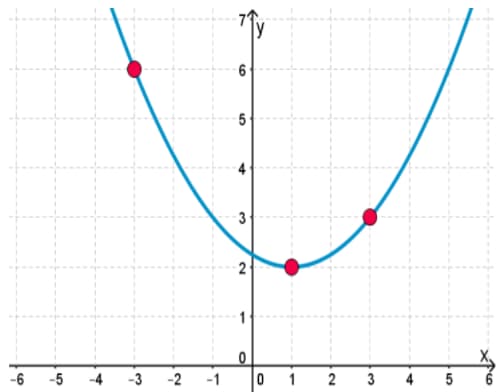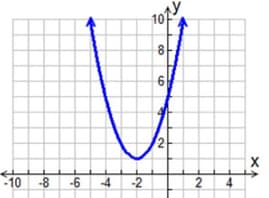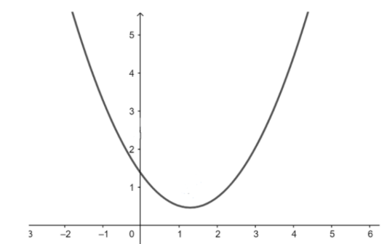Quadratic Graphs
Quadratic Graphs: Overview
This Topic covers sub-topics such as Parabola, Solving a Quadratic Equation, Vertex of a Parabola, Axis of a Parabola, Graph of a Quadratic Polynomial and, Graph of a Quadratic Polynomial Intersecting x-axis at Two Distinct Points
Important Questions on Quadratic Graphs
Draw the graph of and state the nature of their solution.
Which of the following is not the graph of a quadratic polynomial of degree ?
What can you say about the quadratic polynomial represented by the graph

What can you say about the quadratic polynomial represented by the graph

Identify the number of real roots of the quadratic polynomial represented by the graph

The graph of quadratic polynomial lies entirely below the -axis.
Find the co-ordinates of a point on the parabola , whose ordinate is twice of its abscissa.
Prove that the curve whose polar equation is is a parabola.
Find the co-ordinates of vertex and the length of latus rectum of the parabola
Find the locus of the point where being a parameter.
Prove that the locus of the centre of a circle which has an intercept of a given length on the axis of and passes through a given point on the -axis at distance from the origin is the parabola .
Find the co-ordinates of the vertex, focus and the length of the latus-rectum of .
Find the equation of the axis of the parabola .
is a double ordinate of the parabola . Find the locus of its points of trisection.
The co-ordinates of vertex and focus of a parabola are and respectively. Show that the equation of the parabola is .
If the equations of the axis and the directrix of a parabola are respectively and and if the length of its latus-rectum is unit, find the equation and the co-ordinates of the vertex of the parabola.
A point is moving in such a way that its distance from the straight line is always equal to its distance from the fixed point . Find the locus of the point. Identify the nature of the locus.
The area of the triangle formed by the tangents at and to the parabola is
Let be distinct real numbers such that are roots of and are roots of Then is
